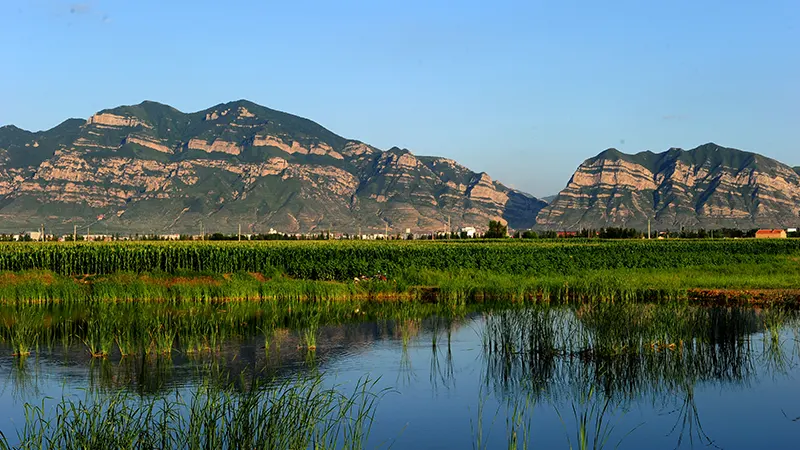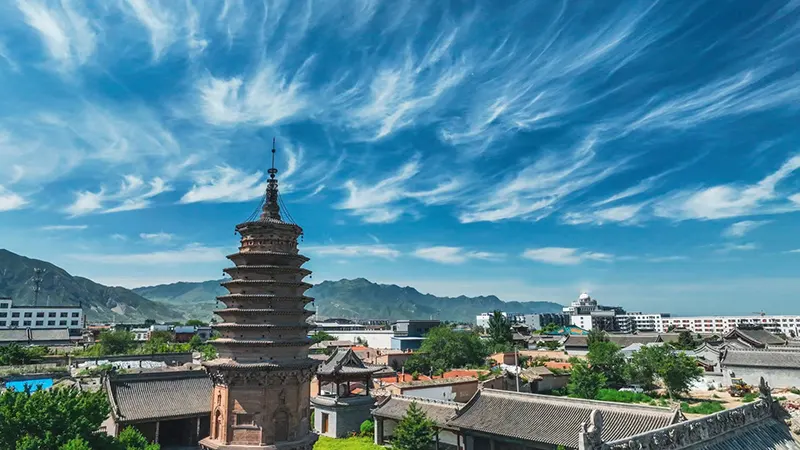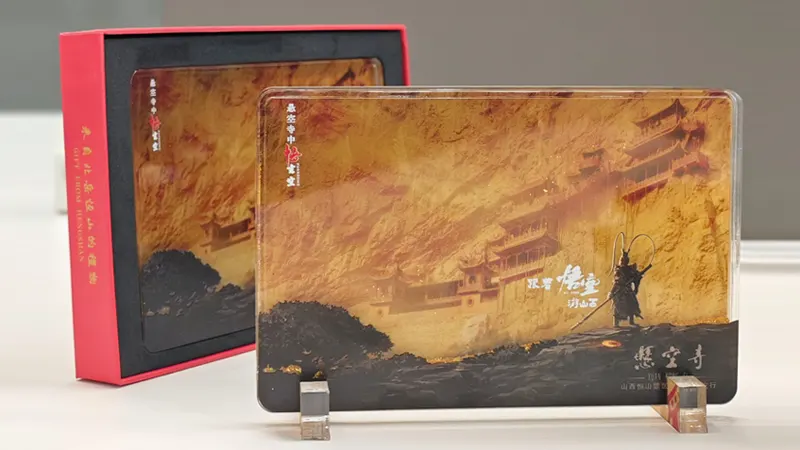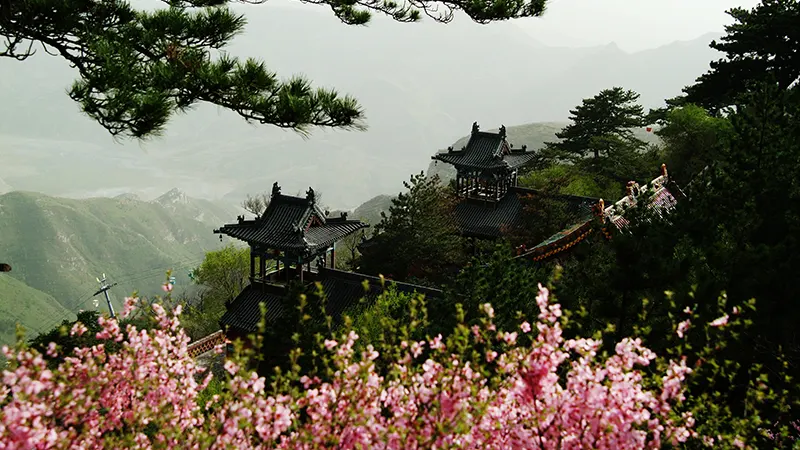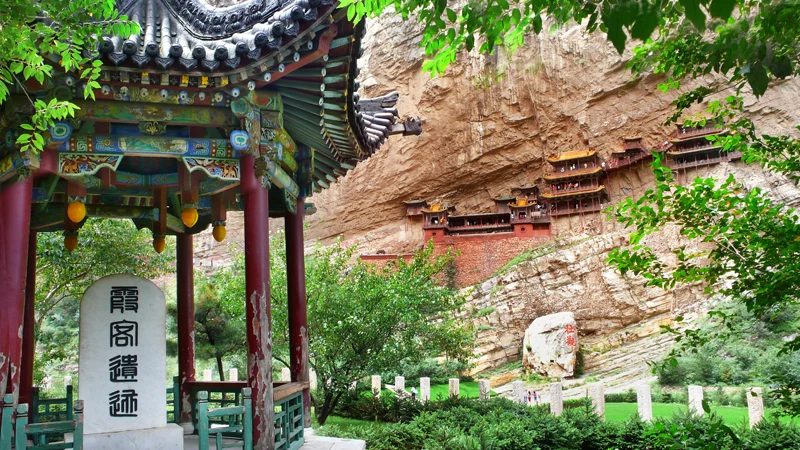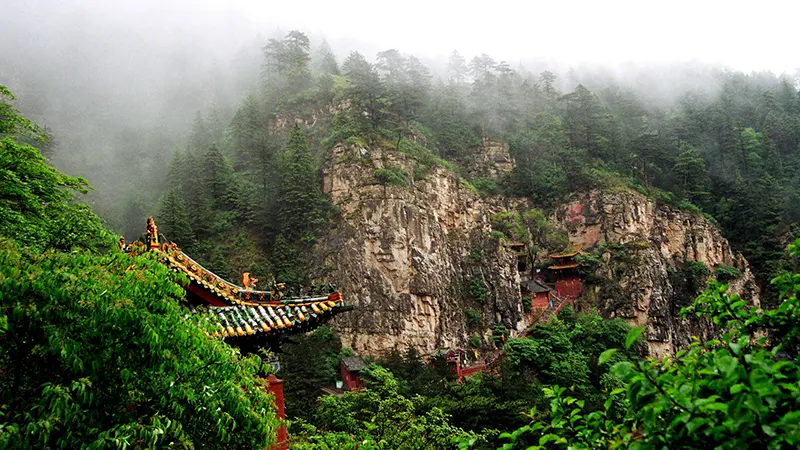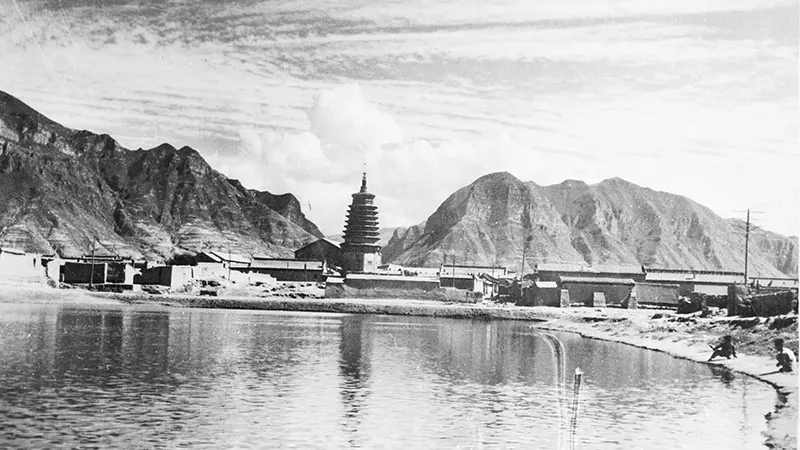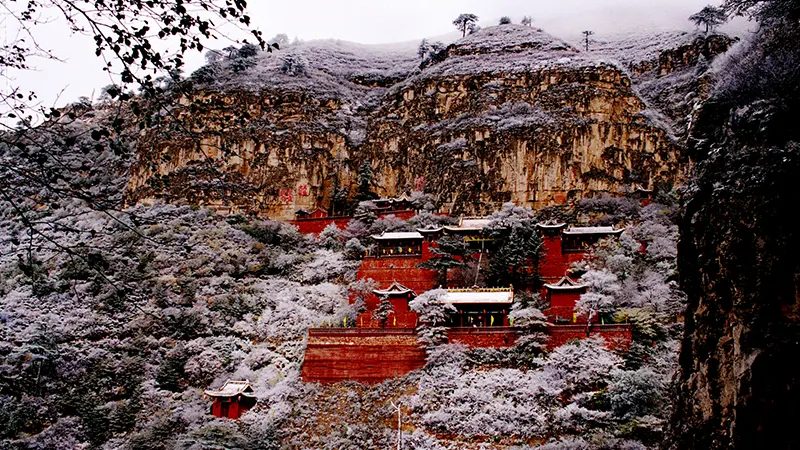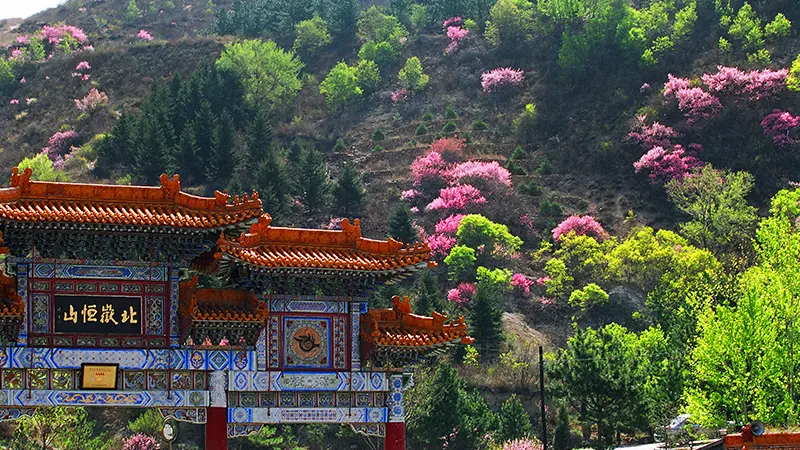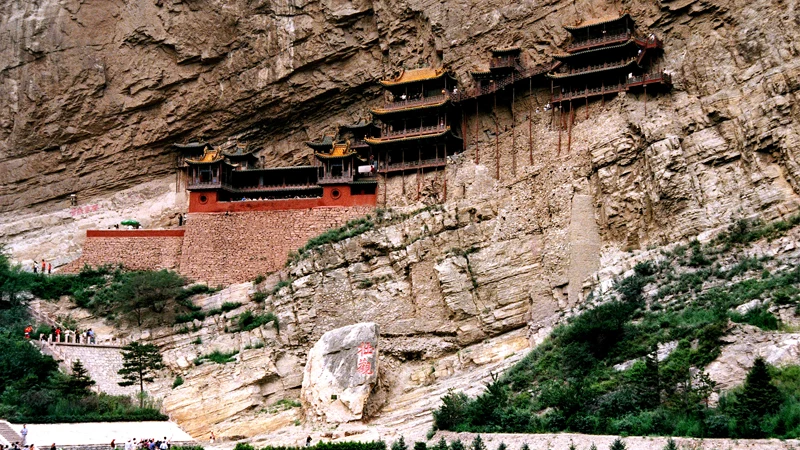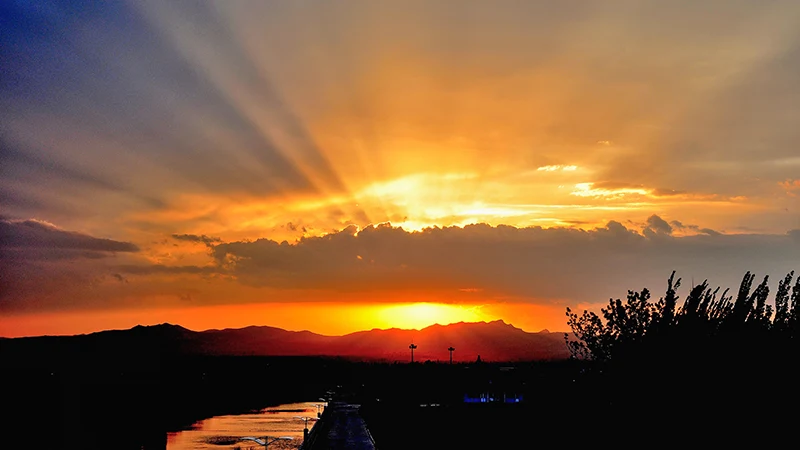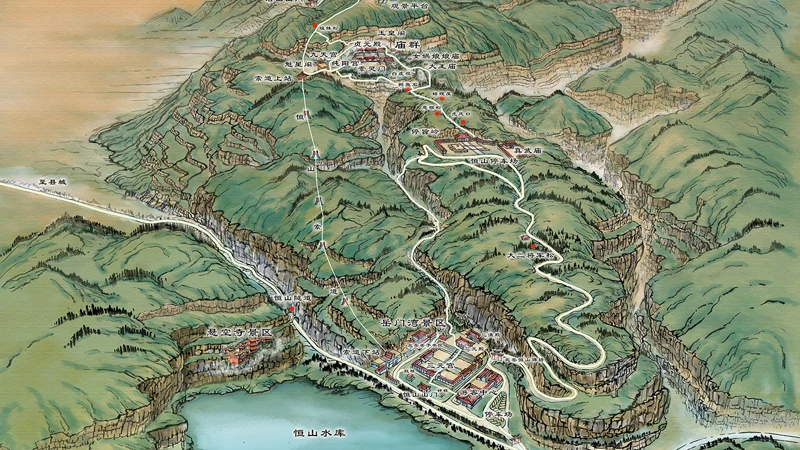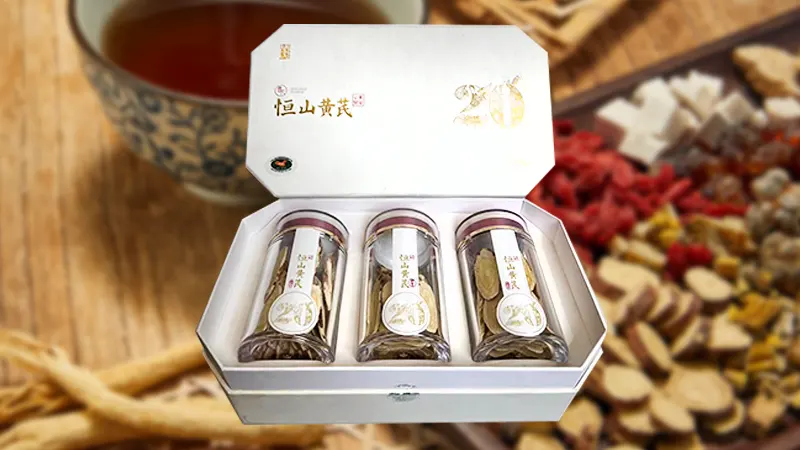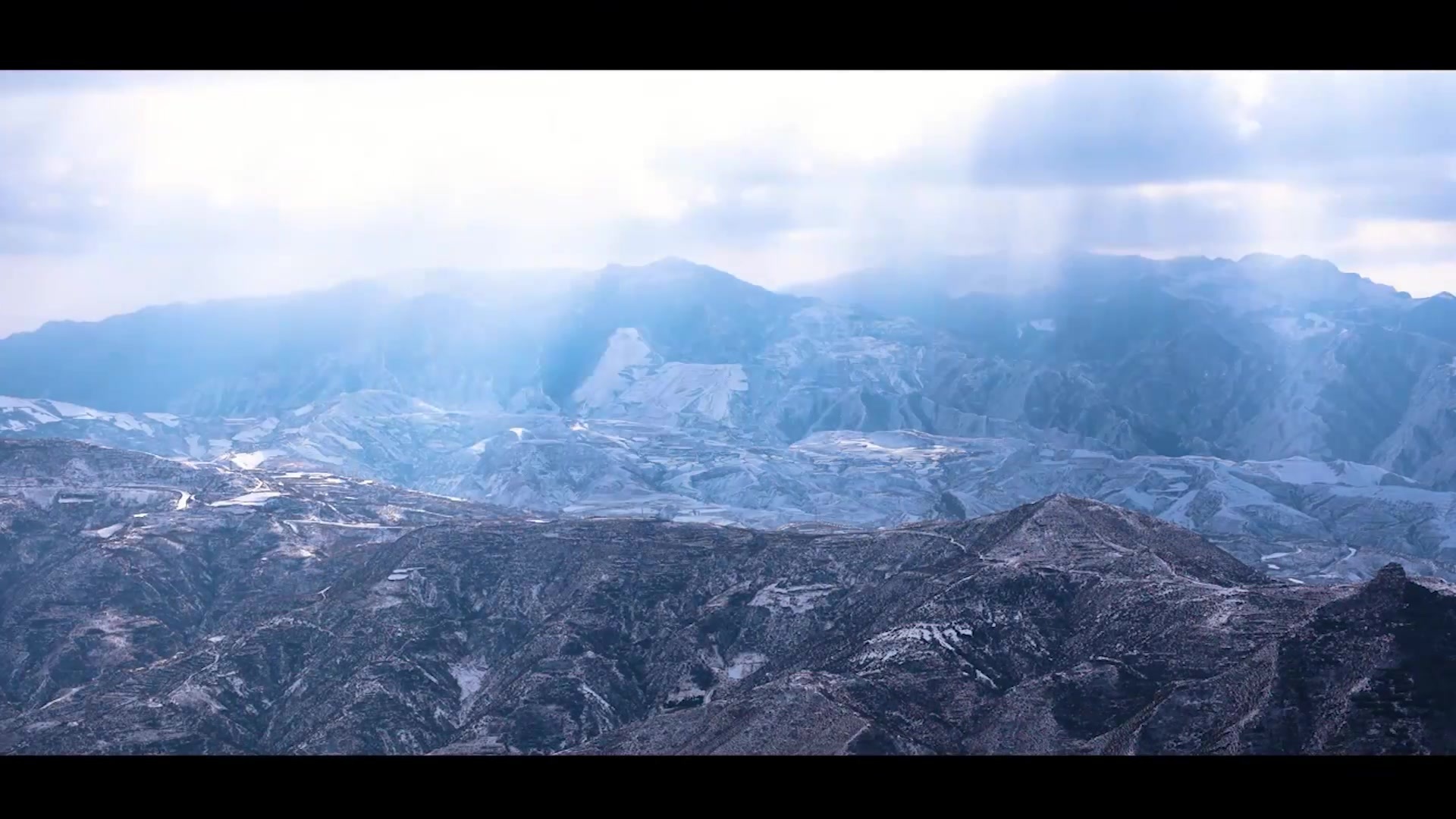Hanging Temple of the 'World's Great View'
Publish Time:
2025-03-14 15:51
Source:
If Hunyuan ancient architecture is one of the classic representatives of ancient Chinese architecture, then Hanging Temple is a shining and dazzling pearl on the crown of ancient Chinese architecture.
If Hunyuan ancient architecture is one of the classic representatives of ancient Chinese architecture, then Hanging Temple is a shining and dazzling pearl on the crown of ancient Chinese architecture. Lu Shoumings, a Jinshi scholar and professor of Ningguo Prefecture during the Qing Dynasty, praised it in "The Continuation of Tai Ping Guang Ji" as "a truly extraordinary feat of engineering and a unique sight". Xu Xiake, a geographer and renowned traveler of the Ming Dynasty, after visiting the Hanging Temple, exclaimed in "The Travel Notes of Xu Xiake" that it was "a magnificent sight of the world". Time magazine has ranked the Hanging Temple as one of the world's top ten "perilous" buildings defying logic.
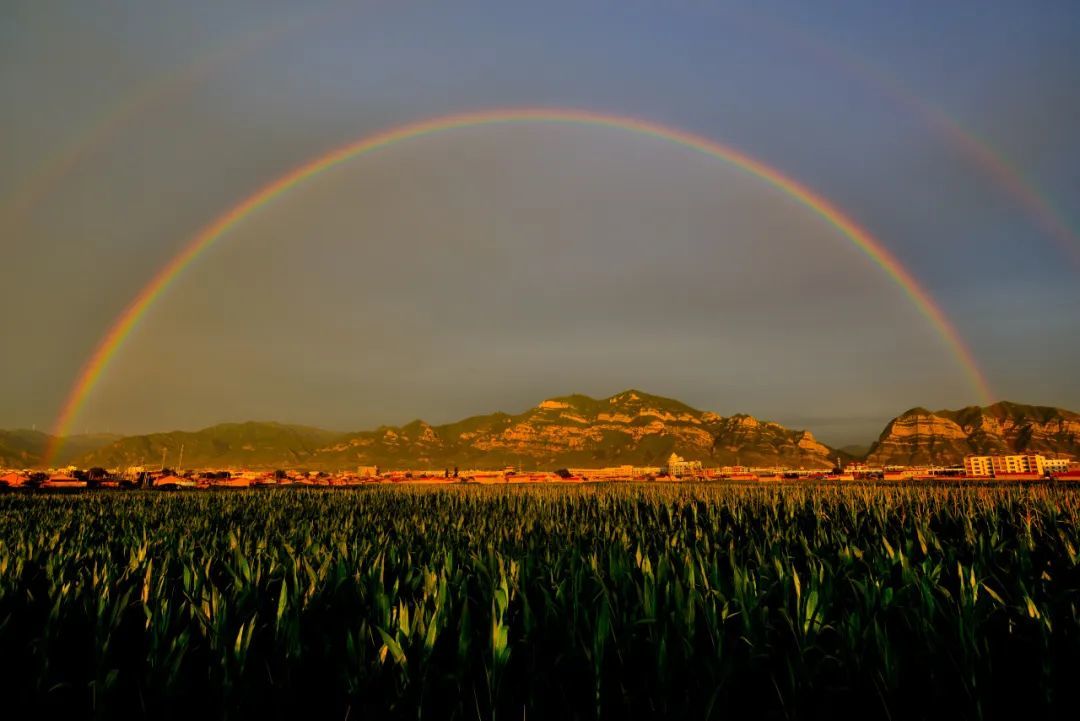
▲View of Hengshan Mountain from the south of Hunyuan City
I. The "Water Cube" of the Northern Wei Dynasty
Originally named Xuan Kong Ge (Mysterious Void Pavilion), also known as Chongxu Temple, the Hanging Temple is located 3.5 kilometers south of Hunyuan ancient city, on the sheer cliffs between the Jinlong Gorge, Tianfeng Ridge and Cuiping Peak of Hengshan Mountain, and between Shimenyu and Ciyaokou. It faces northeast, sitting southwest, and is a group of three-story vermillion buildings supported by 90 vertical pillars of varying lengths. First built over 1500 years ago in the fifteenth year of Taihe (491 AD) during the Northern Wei Dynasty, it has been repeatedly renovated throughout the Tang, Song, Jin, Yuan, Ming, and Qing dynasties. The existing wooden structures are from the Ming and Qing Dynasties. Because it was a royal building constructed for a Taoist master, the craftsmen used were the best in the nation at that time, so it, along with the Yungang Grottoes, is hailed as the Bird's Nest and Water Cube of the Northern Wei era, showcasing superb architectural art.
The temple covers an area of 472 square meters, with a footprint of only 152.5 square meters. It is said that when it was initially built, it was over 90 meters from the ground. Due to years of riverbed siltation, the temple is still 58 meters above the ground, making it one of the world's rare cliffside ancient buildings. It is known as the "Amazing Pavilion in the Air" and the "No.1 Sight of Hengshan Mountain". The entire temple consists of three groups of pavilions, with 20 halls and more than 40 rooms housing 79 statues made of copper, iron, stone, and clay, 14 pieces of gold and stone artifacts (9 steles, 4 inscriptions, 1 stupa), 13 stone carvings, 2 plaques, the Northern Wei plank road, the remains of Yun Ge Rainbow Bridge, and other relics extending 133 meters. The architectural art of the Hanging Temple is extremely exquisite, a historical and cultural heritage where outstanding ancient temple architecture blends with a unique natural landscape. Viewed from afar, the Hanging Temple is like an exquisite wooden carving embedded in sheer cliffs; viewed up close, its roof ridges are arched, the eaves high and swept back, pillars precariously placed, appearing as if a dragon were about to take flight from the cliff face.
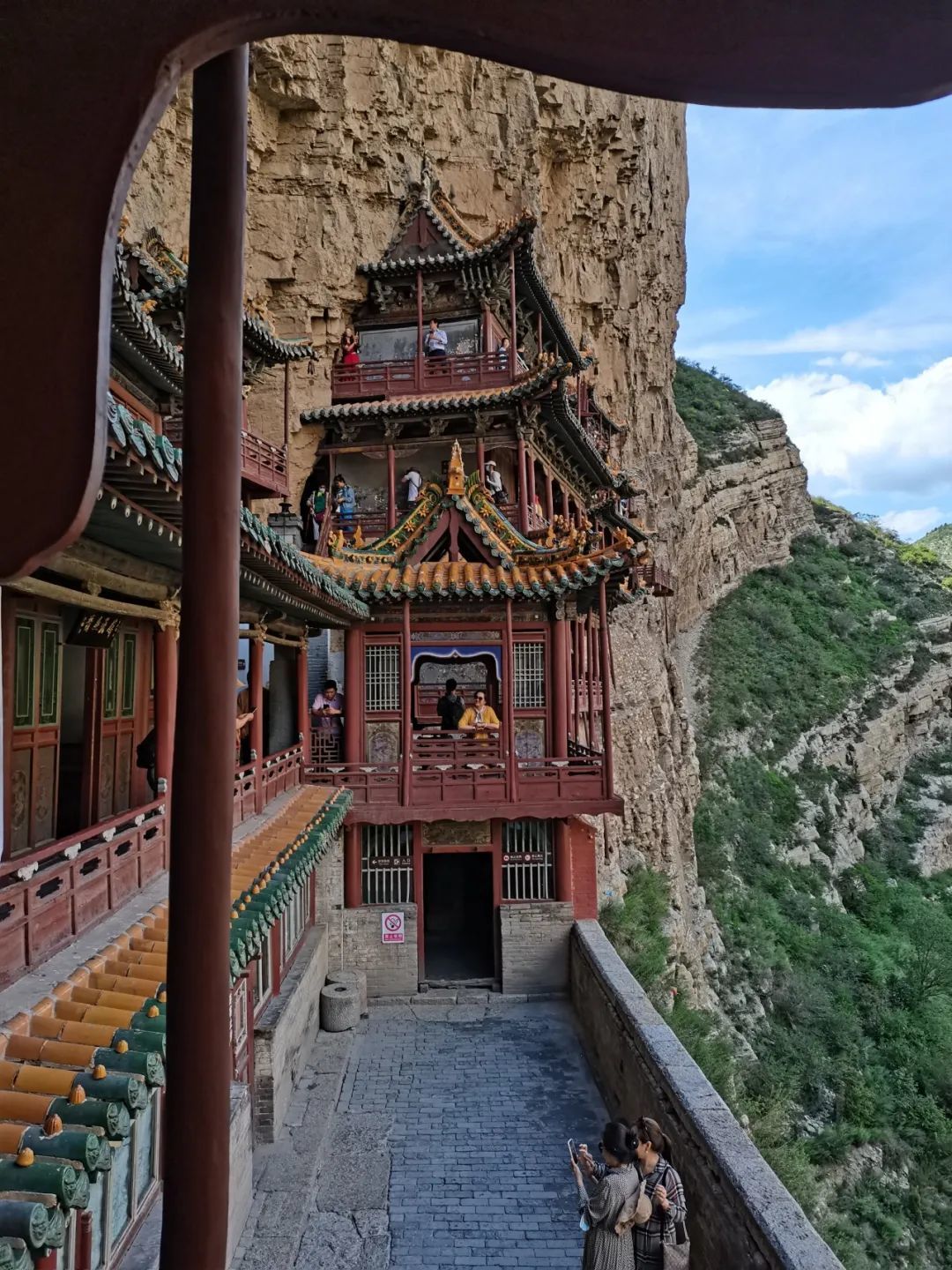
▲Hanging Temple
II. The "Jinglun Palace" and its Rise and Fall with "Dao"
Historically, the construction of the Hanging Temple is closely related to the rise and fall of Taoism in China.
In the early Northern Wei Dynasty, Taoism on Hengshan Mountain flourished under the vigorous promotion of Kou Qianzhi, a Taoist reformer. Originally a Taoist priest from Mount Song, Kou Qianzhi arrived in Pingcheng (present-day Datong) in the first year of Shiguang (424 AD) during the reign of Emperor Taiwu, presenting twenty volumes of "Cloud Zhong Yin Song Xin Ke Zhi Jie" and over sixty volumes of "Lu Tu Zhen Jing", claiming these scriptures were given to him by the great-grandson of Laozi (the founder of Taoism), and was bestowed the title of Taoist Grand Master, and instructed in the methods of the Jinglun Heavenly Palace to assist and support the Northern True Monarch of Peace. If the True Monarch of Peace followed the requirements of building the Taoist altar "Jinglun Palace" so that "it must be high, beyond the sounds of roosters and barking dogs, to connect with the heavenly gods", he would attain immortality. Thus, Emperor Taiwu followed Kou Qianzhi's advice and built a five-story Taoist altar in the southeast of the capital (the present-day Caofu Building area in Shuibosi Township, Datong). With Emperor Taiwu's trust and support, Kou Qianzhi promoted Taoism widely, and Taoism on Hengshan Mountain prospered for a time. Later, Emperor Wencheng and Emperor Xiaowen, who favored Buddhism, supported Buddhism, which gradually revived. Though Taoism wasn't suppressed, it gradually lost favor and declined. In the fourteenth year of Taihe (490 AD), Empress Dowager Feng, who assisted Emperor Xiaowen, passed away, and Emperor Xiaowen officially took power. After taking power, Emperor Xiaowen further promoted the Sinicization reforms. In the fifteenth year of Taihe (491 AD), Emperor Xiaowen, who was fond of Buddhism, ordered the relocation of the five-story Taoist altar outside the capital city. "On the day of Wu Xu, the Taoist altar was moved to the south of Sanggan River, and renamed Chongxu Temple" ("Book of Wei, Emperor's Records, Volume 7"). "It was moved to the south of the Sanggan River (Sanggan River), south of the mountain (Hengshan Mountain), and permanently situated there. Fifty households were assigned to provide offerings and sacrifices. It remained named Chongxu Temple." ("Book of Wei, Buddhist and Taoist Records"). This actually fulfilled Kou Qianzhi's requirement that it "must be high, beyond the sounds of roosters and barking dogs, to connect with heavenly gods". This Taoist altar took root in the middle of the cliffs of Hengshan Mountain, becoming the famous landscape we see today, "reaching towards the clouds above, and far from the mundane world below"—the Hanging Temple. In the eighteenth year of Taihe (493 AD), Emperor Xiaowen made arrangements for the relocation of important Taoist altars like the Hanging Temple before formally moving the capital to Luoyang.
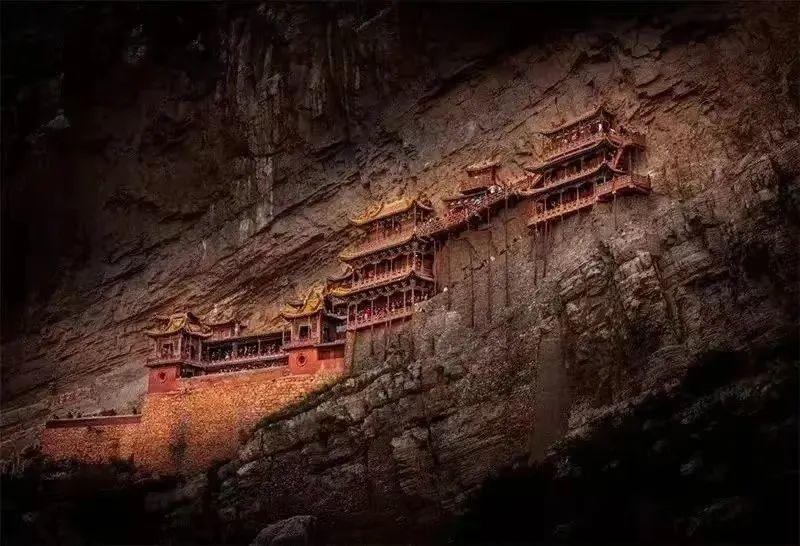
▲Night View of Hanging Temple
III. Five Wonders Suspended on Precipitous Cliffs
The preservation design of the Hanging Temple is exceptionally perfect. Standing independently on a precipice, and having weathered the vicissitudes of time, the entire structure, after 1500 years, remains intact, with its scale, structure, statues, and inscriptions all retaining their original style, a true miracle. I summarize this as "Five Wonders":
Remarkable Location
The section of Shimenyu Gorge where the Hanging Temple is located is embraced by Tianfengling and Cuiping Mountain on both sides, with the Hun River meandering through. Viewed from the air, it resembles a Tai Chi diagram, with the Hanging Temple situated at the Yin and Yang fish positions, showcasing the profound meaning of Tai Chi giving birth to the two instruments. The Cuiping Peak cliff face on which the Hanging Temple is built is composed of Ordovician limestone, which is quite hard and resistant to weathering, providing a solid foundation for the temple. The cliff face where the Hanging Temple is located is a concave arc, like a huge umbrella, not only protecting the temple from heavy rain but also creating a spectacular scene of misty rain, ethereal mountains, and rain droplets flying upwards, known as the "magnetic gorge misty rain." The Cuiping Peak cliff face and the Tianfengling peaks opposite form a gorge, blocking sunlight. Even on the summer solstice, the longest day of the year, the sunlight exposure doesn't exceed three hours, avoiding direct sunlight during the most intense periods. The winding Jinlong Gorge, with its concave cliff face, shelters the temple from the howling winds outside, keeping the temple dust-free. A sky pit on the cliff top collects rainwater and falling rocks. Occasionally, rocks roll down from the mountaintop, following a parabolic trajectory into the ditch, leaving the temple unharmed. It's no wonder that a Qing Dynasty architect exclaimed, "A world-class wonder, its magnificence will remain for a thousand years. Why? Because the temple is built in the cliff's concave part, sheltering it from wind and rain and falling rocks, a testament to ingenuity." Even more magical is that from late October to mid-November, a cursive script character "佛" (Buddha) appears on the cliff face above the Three Teachings Hall of the Hanging Temple. It's about three stories high and two rooms wide, formed by light and shadow, with vigorous brushstrokes and elegant, spirited characters. This light and shadow wonder only appears at a specific time, location, and under specific light conditions. The best viewing time is around 11 AM during this period, requiring a clear sky and good illumination. It lasts approximately 20 minutes. Even more mysterious is a Ming Dynasty cliff inscription about 4 square meters in size, located 40 meters south of the Hanging Temple's entrance on the cliff face, which reads "空中见佛" (Buddha seen in the air). In April 2014, Princess Sirindhorn of Thailand, a devout Buddhist, visited the Hanging Temple. The "Buddha seen in the air" phenomenon wasn't present, yet upon getting off her vehicle and gazing at the Hanging Temple from afar, she was instantly astonished by the extraordinary spectacle, spontaneously exclaiming, "Buddha appears in the air!" The perfect coincidence between ancient and modern, East and West, leaves one wondering whether it was intentionally created by ancient craftsmen or a natural phenomenon.
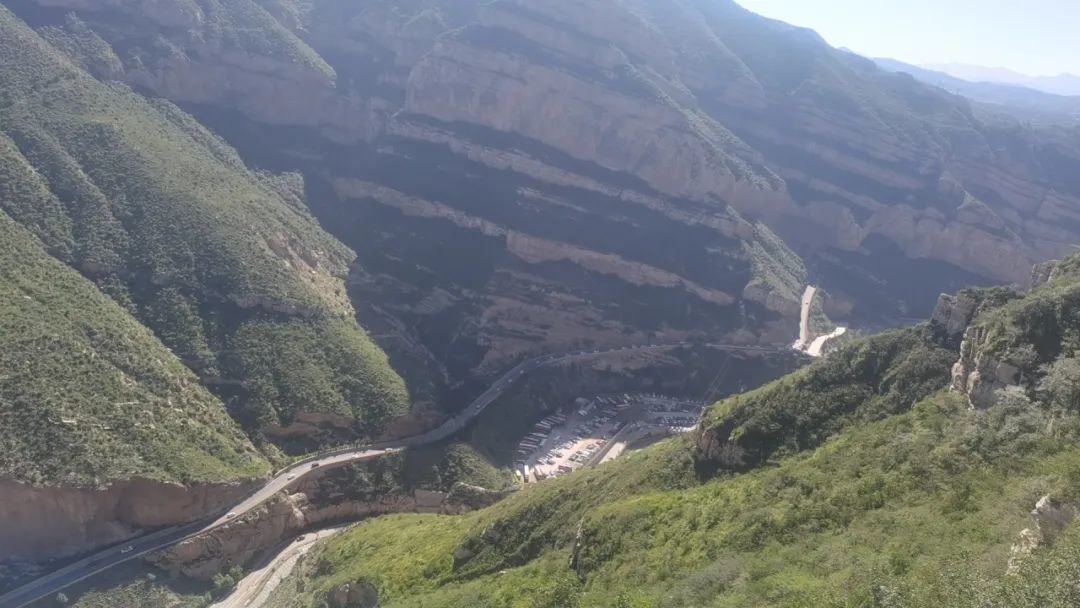
▲Hengshan Mountain Reservoir
Unique Structure
The entire complex of halls and pavilions of the Hanging Temple ascends from a slightly lower point on the southern cliff, with individual structures interconnected, showing symmetry and variation. Caves within buildings, buildings within corridors, and corridors concealing caves, all create a staggered, echoing, winding, layered, compact, and clearly defined layout. This combination of reality and illusion offers a dynamic interplay of forms and spaces, achieving a well-organized artistic effect. The construction of the Hanging Temple utilizes sophisticated and profound principles of mechanics. It is partially supported by horizontal beams ingeniously using the rocks for support, with beams and pillars forming a single unit, and corridors and railings tightly connected. The 27 wooden horizontal beams, approximately 50 centimeters in diameter, are made from high-quality local hemlock wood, previously soaked in tung oil for insect and decay resistance. They are processed into a scissor shape, with most of them obliquely inserted into the rock, leaving about one meter exposed. The entire base of the pavilion rests directly on these beams. When the beams are hammered in, wedges previously inserted drive into the beams, meaning that the greater the external force, the tighter the internal grip, similar to modern expansion bolts. This firmly secures the beams, transferring the load to the rocks and significantly reducing the pressure on the beams. The 30 vertical pillars, each tens of meters long and tens of centimeters in diameter, are divided into three groups, carefully positioned under two pavilions and a walkway. They can support a substantial weight when there are many visitors, and serve a decorative function, enhancing the precarious beauty when there are few visitors. A local folk saying describes it as, “The Hanging Temple, halfway to the sky, hanging on three horsetails.” These "horsetails" refer to the red vertical beams connecting the pavilions and walkways to the protruding rocks. Furthermore, the traditional mortise-and-tenon structure allows for slight movement without separation, preventing damage from wind or earthquakes. The Hengshan Mountain region has experienced several recorded earthquakes; the 1989 Dayang earthquake with a magnitude of 6.1 caused the collapse or cracking of many rural and urban houses, but the Hanging Temple remained steadfast.

▲Interior view of the Hanging Temple
Cultural Uniqueness
The perfect blend of religious and ethnic cultures forms the enduring cultural core of the Hanging Temple. Located on Hengshan Mountain, the temple is profoundly influenced by the mountain's geographical location, cultural characteristics, and religious beliefs. The frontier war culture, religious fusion culture, and ethnic fusion culture of Hengshan Mountain are all reflected in the Hanging Temple. With changing times and evolving folk beliefs, the Hanging Temple gradually evolved from a primary Taoist temple into one that integrates Confucianism, Buddhism, and Taoism, becoming a typical representative of Chinese "harmony" culture. Hengshan Mountain is the birthplace of the Quanzhen School of Taoism, whose founder Wang Chongyang advocated the "unity of three teachings," stating, "Confucianism, Buddhism, and Taoism are interconnected, all stemming from one origin." The Three Teachings Hall on the top floor allows one to appreciate this "unity of three teachings." Confucius, Sakyamuni, and Laozi, the founders of these three teachings, are enshrined together: Buddhism emphasizes compassion, saving all beings; Confucianism values harmony, emphasizing love for others; and Taoism emphasizes emptiness, following the laws of nature. These three teachings, while distinct, complement and coexist harmoniously, fully reflecting the inclusiveness and grandeur of Chinese culture. The cultural characteristic of the unity of the three teachings prevented conflict among believers, leading to harmonious coexistence, mutual respect, and shared worship, creating a peaceful multicultural atmosphere of religious harmony and global unity, ensuring the preservation of this architectural marvel for millennia. The east-facing layout of the Hanging Temple reflects the cultural characteristic of the Northern Wei Xianbei people's worship of the sun totem, complementing the sculptures and stone carvings that reflect the cultural characteristics of the Han people of central China. The fusion of ethnic cultures adds further brilliance to the Hanging Temple. Since the founding of the People's Republic of China, the Hanging Temple, renowned for its "uniqueness, ingenuity, and suspension," has been highly favored by tourists and scholars worldwide as an outstanding example of ancient cliffside architecture, a unique religious fusion culture, a national treasure, and an example of ethnic cultural fusion, and its protection efforts are unprecedented.

▲Interior view of the Hanging Temple
Sculptural Uniqueness
The relics within the Hanging Temple are of extremely high value. The temple houses 79 statues of various types, including bronze, iron, stone carvings, and clay sculptures. Among them, the three detached-纱 Buddha statues enshrined in the Three Buddha Hall are Tang Dynasty craftsmanship, made during the Ming Dynasty, employing the advanced detached-纱 sculpture technique. This technique involves first sculpting a clay mold, then layering hemp cloth and a mixture of raw lacquer and fine tile ash. Lacquer is then used to adhere the hemp cloth to the clay mold; due to the cement-like strength of the raw lacquer and fine tile ash, combined with the tensile strength of the hemp cloth, it's akin to building a house, the hemp cloth being the rebar and the raw lacquer and tile ash the cement. After five to six layers of hemp cloth and lacquer are applied crisscross, and once they have dried and solidified, the clay mold is removed, resulting in a hollow lacquer statue base. Afterwards, the surface of the statue base is further decorated with lacquer coloring, gold leaf, and polishing. Therefore, it is also known as a "hollow statue." Statues made using this method are not only soft and lifelike but also very light, making them easy to transport, hence the name "traveling statue." Most of China's early detached-纱 Buddha statues are now in foreign countries; the Metropolitan Museum of Art and the Seattle Art Museum in the United States each possess Tang Dynasty detached-纱 Buddha seated statues. The statue of Jianzhen in Todai-ji Temple in Nara, Japan, is also a detached-纱 Buddha statue; Jianzhen brought the sculpting technique from China, and the Japanese commonly call this detached-纱 sculpture technique "dry lacquer," leading some people in Europe and America to only know "dry lacquer" without knowing the Chinese name "夾纻脫胎" (jiāxùn tuōtāi), i.e., detached-纱 sculpture. The three Tang Dynasty detached-纱 Three Buddhas enshrined in the Three Buddha Hall of the Hanging Temple are exquisitely crafted, solemn and compassionate, weighing only 2.5 kilograms, and are rare treasures. In addition, the coiled dragon and peony screen in the Three Officials Hall is made of grass and mud, with vibrant peony colors and a vivid coiled dragon; it has been praised by the World Architects' Conference as a world art treasure; the stone carvings of the three bodies of Buddha (法, 報, 化) in the Hanging Temple's plank road grottoes are from the Northern Wei Dynasty, magnificent and dignified, comparable to the Yungang Grottoes in Datong, known as "Little Yungang"; the clay sculptures of Sakyamuni, Weituo, celestial maidens, and Ananda in the Three Saints Hall are appropriately proportioned, full-bodied, with diverse expressions and lifelike features; the renowned painter Professor Luo Gongliu praised them, saying: "The clay sculptures of the Three Saints Hall are in the Tang Dynasty style and are the finest of all the clay sculptures in the Hanging Temple."

▲Hengshan Mountain
Stone Carving Wonders
The Hanging Temple boasts numerous and exquisitely crafted inscriptions. The earliest inscriptions date back to the Northern Wei Dynasty; extant fragments have received high praise from experts, serving as strong evidence of the temple's Northern Wei origins. The Hanging Temple preserves 14 pieces of gold and stone relics (9 steles, 4 stone tablets, 1 pagoda) and 13 stone carvings. A stele inscribed with the poem "Early Visit to the Hanging Temple" by Zheng Luo, the Ming Dynasty Minister of War, is embedded in the cliff wall of the corridor beside the temple's bell tower; a stele commemorating the renovation of the Hanging Temple in the 16th year of the Jin Dynasty's Da Ding era (1176) is embedded below the four large characters "Ingenious Craftsmanship of Gongshu" carved into the temple's grotto. On a large rock in the riverbed outside the temple are four characters inscribed by Sun Gongliang, a Yuan Dynasty censor and Minister of Works from Hun Yuan, which read "Cloud-side Awakened Shore"; these ancient, dignified, elegant and generous characters are considered a masterpiece of calligraphy. The numerous stone carvings and steles are like entering a treasure trove of ancient stone carving art, truly breathtaking.
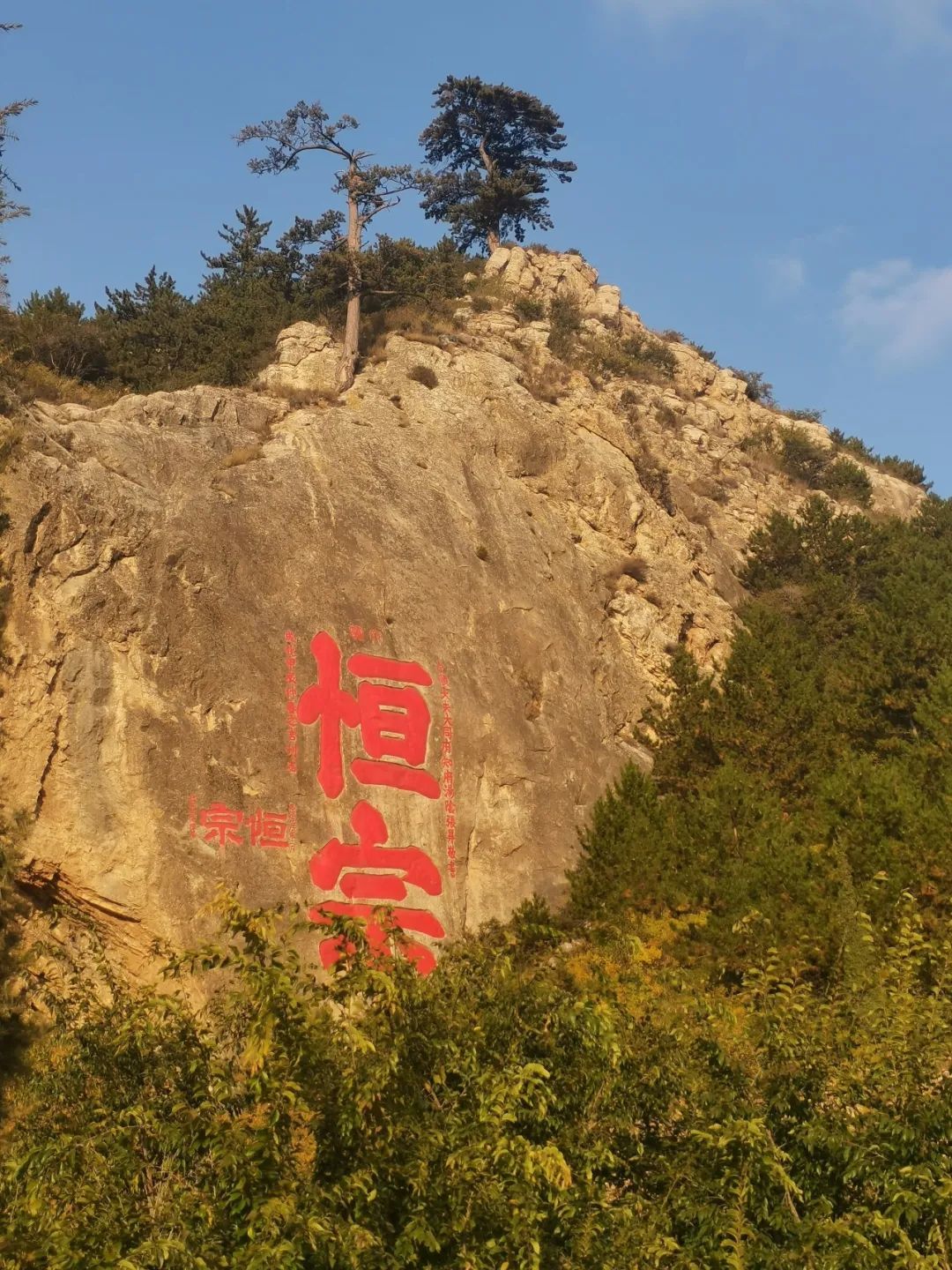
▲Hengshan Mountain Dazibawan
4. The Banished Immortal Li Bai and the Hanging Temple
On a large rock below the Hanging Temple are the striking characters "Magnificent View," a high praise for the temple, inscribed by the great Tang Dynasty poet Li Bai during his visit, now a popular spot for tourists. In addition, Li Bai left behind well-known poems for the Hanging Temple.
According to records, Li Bai, the poet who famously declared, "I would travel far to seek immortals among the Five Great Mountains, and I love to visit famous mountains throughout my life," visited Hengshan Mountain at least twice. Li Bai loved to travel with his sword from the age of 15, wandering throughout the country, leaving behind many popular and beautiful poems wherever he went. His first visit to Shanxi was in May of the twenty-third year of the Kaiyuan era (735 AD), when he was invited by his friend Yuan Yan to travel through the Taihang Mountains to Shanxi. Yuan Yan, a man of letters, came from a wealthy family; his father was the Taiyuan prefect, responsible for defending the northern border. Li Bai and Yuan Canjun (Yuan Yan) had interacted several times, sharing a close friendship. Yuan Yan had built a tower by the Tianjin Bridge in Luoyang exclusively for Li Bai. Li Bai once wrote a poem, "Recalling Old Travels, Sent to Yuan Canjun of Qiao County," which recalls their friendship, including the lines: "In May, we called to each other and crossed the Taihang Mountains, the broken wheels did not mind the hardship of the winding mountain path. Traveling to Beiliang, the years have deepened, I appreciate your precious friendship more than gold. Exquisite cups and food on a green jade table, made me drunk and full, with no heart to return. From time to time, I went to the western part of the city, the water of Jinci Temple was like green jade." This fully expresses the preciousness of friendship and the praise of the beautiful mountains and waters of Shanxi. The following spring, Li Bai, longing to return home, left Shanxi and returned to Anlu, Hubei. His second visit to Shanxi was more than ten years later, around the spring of the eleventh year of Tianbao (752 AD), when Li Bai traveled from Yixian County in Hebei, crossed Yimaling to Shanxi, passed through Hunyuan Jinlong Gorge, crossed Shuiche Valley, and arrived at the Hanging Temple. This time, his mood during his visit to Hengshan Mountain and the Hanging Temple was quite different from his previous visit, affected by the fact that villains were in power at court, the government was weak, the people's livelihood was poor, and the border was unstable. His mood during his visit to the Hanging Temple and Hengshan Mountain should have been gloomy, as expressed in several "Ancient Style" poems he wrote on Hengshan Mountain. As his poems express, "The Jin wind has already declined, and I cry bitterly on the road to ruin," "The sparrows nest in the tung trees, and the mandarin ducks live in the thorny bushes. Let's go back, the song of the sword is sad and difficult," etc. This was Li Bai's last visit to Hengshan Mountain. After visiting Hengshan Mountain, Li Bai stayed overnight at the Hanging Temple, looking down at the rushing water in the valley, looking up at the stars in the sky, touching the iron railings of the ancient temple built by order of Emperor Daowu of Northern Wei, he was inspired. After writing the word "magnificent" in the temple, he spontaneously recited the famous "Night Lodging in a Mountain Temple": "The dangerous building is a hundred feet high, and I can pick the stars with my hand. I dare not speak loudly, for fear of startling the people in heaven." The "people in heaven" in Li Bai's mind was probably Zhang Guolao, because Emperor Xuanzong of Tang had summoned Zhang Guolao, whose immortal reputation was widespread, and Li Bai's visit to Hengshan Mountain probably also had the intention of seeking Zhang Guolao, but unfortunately, he did not meet the hermit. The life of Chinese literati is either seclusion in chaos or service in times of peace. Li Bai had both a heroic complex and a Taoist spirit. Whether it was the heroic Emperor Daowu and Emperor Xiaowen, or the resurrected and magically transformed Zhang Guolao and Lü Chunyang, they were all his unforgettable idols, which made him the unparalleled, elegant, romantic, and immortal poet Li Taibai. This poem vividly depicts the wonder of the Hanging Temple, leaving a precious historical and cultural legacy for the Hanging Temple. There used to be a Taibai Shrine below the temple, with a statue of Taibai, but it was later destroyed. Three years later, the Anshi Rebellion broke out, and Li Bai could no longer live in seclusion.
The people of Hunyuan should thank this exiled immortal. A seemingly simple inscription and poem allow modern people from all over the world to touch the profound essence of excellent traditional Chinese culture and the romantic sentiments of ancient literati through the smoke and clouds of thousands of years of history at the foot of the Hanging Temple.

▲The Hanging Temple
Five Thousand Years of Plank Roads: Speaking of "Yun Ge"
In addition to the magnetic gorge and misty rain landscape mentioned earlier, the Yun Ge Rainbow Bridge landscape is also the second most beautiful of the eighteen scenic spots of Hengshan Mountain. More than 200 meters south of the Hanging Temple mountain gate is also the narrowest part of Jinlong Gorge, which has been a transportation route for emperors' eastern tours, military expeditions, and merchants since the Northern Wei Dynasty. The "Book of Wei" records that during the reign of Emperor Daowu, "When the imperial carriage was about to return north, 10,000 soldiers were dispatched to build a straight road from Wangdu Tieguan to Dai, more than 500 li long." During the reign of Emperor Xiaowen, "In the seventh month of autumn, 50,000 people were dispatched from prefectures and counties to build the Lingqiu Road." The straight road and Lingqiu Road in the text refer to the road that passes through Hunyuan, crosses Jinlong Gorge of Hengshan Mountain, and reaches Lingqiu. There used to be ancient plank roads and connected buildings in this gorge. Generations of heroic soldiers guarding the border bid farewell to their families and crossed the valley with their luggage; literati like Li Bai and Xu Xiake leaned on the bridge and looked into the distance, expressing their thoughts of the past. Now the Yun Ge Rainbow Bridge spanning the gorge has been destroyed, the history has faded the gleam of swords and shadows, the sound of drums and horns has gone away, the ancient road has been buried, the border city has been abandoned, and only nearly 100 meters of ancient plank roads and the inscription "Yun Ge" remain on both sides of the steep cliffs, stubbornly telling the story of gatherings and partings, rise and fall to visitors.
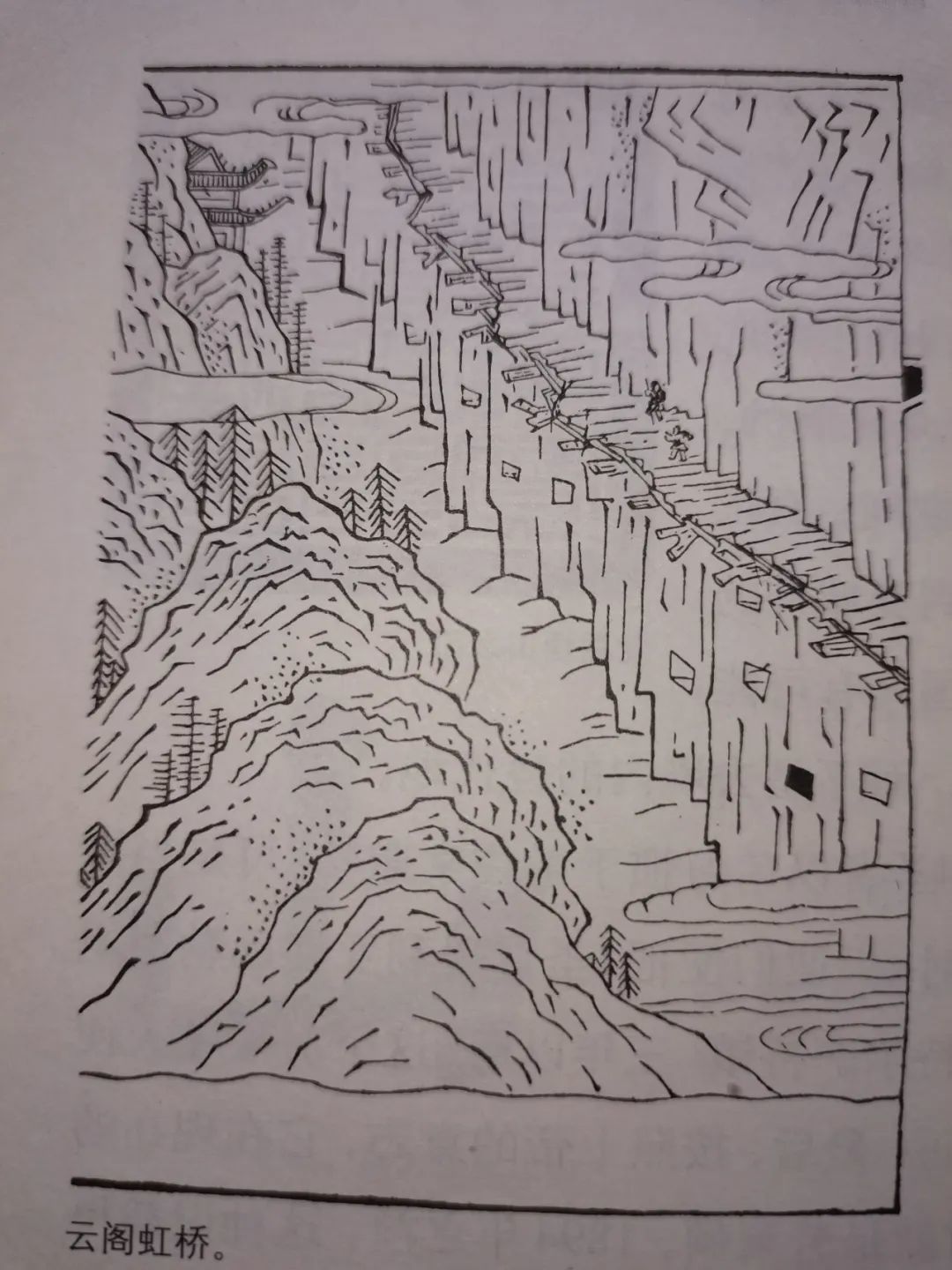
▲Yun Ge Rainbow Bridge Illustration from the Qing Dynasty Qianlong edition of "Hunyuan Prefecture Records"
The Hanging Temple, a wonder of architecture that combines strangeness, ingenuity, and suspension, has won many awards over the years. In 1965, the Hanging Temple was announced by the Shanxi Provincial Government as a key cultural relic protection unit in Shanxi Province; in 1982, it was announced by the State Council as a national key cultural relic unit; in 2001, it was rated as a "National AAAA-level Tourist Area" by the State Tourism Administration, together with the Hengshan Mountain scenic area, and was included in the "National Natural and Cultural Dual Heritage List" and the "World Natural and Cultural Dual Heritage Tentative List." After visiting the Hanging Temple, you will surely be amazed by the profound wisdom, unique thinking, and superb craftsmanship of our ancestors!
Epstein, a Polish internationalist, said: "The Hanging Temple is beautiful, one of the wonders of the world that the Chinese people are proud of."
Nino, an Italian archaeologist, said: "Just for this unique temple, it's worth coming to China." The Hanging Temple, a building that brings together the culmination of ancient architectural science and the essence of Chinese Buddhist, Taoist, and Confucian culture, has a thousand faces and a thousand beauties. The famous Dao Yuan Zen master said: Enlightenment is intimacy with all things. Friends, if you want to make your life worthwhile, you must visit the Hanging Temple!

▲Hengshan Mountain
Proofreading: Xuefang
Editor: Xuelin
Author's Introduction
Yang Xinru, a native of Hunyuan, Shanxi, is a member of the Shanxi Writers Association.
Keywords:
Previous Page
Related News
Republic of China hemp mat treasure | Guiyou (1933) Deng Hengyue Ji (with poems and texts)
In today's ancient city of Hunyuan, when discussing well-preserved ancient residences, one must mention the "Ma Family Courtyard." The original owner, Ma Xi Zhen, has also gained attention, as if the person is known because of their residence.
Republican High Liangzuo | 1935 North Shanxi Field Trip Notes
In the spring of 1935, the Nationalist Government in Nanjing dispatched Shao Yuanchong, a member of the Central Executive Committee of the Kuomintang, and Zhang Ji, a member of the Central Supervisory Committee, to Shaanxi to pay homage to the Yellow Emperor's Mausoleum. After the ceremony, Shao Yuanchong went on an inspection tour of Northwest China, visiting Gansu, Qinghai, Ningxia, Inner Mongolia, and Shanxi. His secretary, Gao Liangzuo, accompanied him throughout the journey, recording their observations and experiences, which were subsequently published in major newspapers and generated significant public attention.
Republic of China, Jiang Weiqiao | 1918 Hengshan Mountain photo album
In September 1918, Jiang Weiqiao, a councillor of the Ministry of Education of the Beiyang Government, was ordered by the Ministry of Education to inspect the academic affairs in Shanxi Province. He took the opportunity to pay his respects at Mount Wutai and Hengshan Mountain. He departed from Beijing on September 21, first taking a train to Shijiazhuang, and then to Taiyuan; then he took a carriage to Mount Wutai and Hengshan Mountain; and finally returned to Beijing from Datong by train on October 13.
Shao Yuanchong of the Republic of China | Brief Record of the 1935 Northern Mount Taihe Expedition
In the spring of 1935, the Nanjing Nationalist Government dispatched Shao Yuanchong, a member of the Central Executive Committee of the Kuomintang, and Zhang Ji, a member of the Central Supervisory Committee, to Shaanxi to pay homage to the Yellow Emperor's Mausoleum. After the ceremony, Shao Yuanchong went on an inspection tour of Northwest China, departing from Xi'an on April 25 and subsequently visiting Gansu, Qinghai, Ningxia, Inner Mongolia, and Shanxi.
Chen Xingya's Travelogue of Yungang Grottoes and Hengshan Mountain in 1935, Republic of China
Between the September 18th Incident and the Marco Polo Bridge Incident, Chen Xingya held the idle post of council member of the Peiping Pacification Commission, staying at home and often traveling with friends to various famous scenic spots in China.


